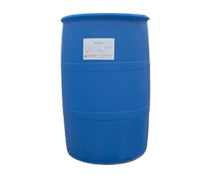Alkyl glycosides have good solubility in water. The main reason is that many hydroxyl groups on the glycoside head group can form hydrogen bonds in water. However, it should be noted that although the glycoside head group in APG molecules has a stronger ability to form hydrogen bonds with water than the alkyl chain, its hydration degree is far less than that of polyoxyethylene nonionic surfactants. Therefore, APG does not have cloud point and diluted gel like other non-ionic surfactants. This property makes the complex system it participates in to build have no temperature induced phase transition, which provides convenience for people to prepare products that can exist stably in a wide temperature range.

APG has strong acid-base resistance. It has excellent solubility, stability and surface activity in acid solution, and its solubility and surface activity in alkaline solution are much better than other non-ionic surfactants. In addition, compared with other surfactants, it also has good salt resistance, and can be formulated into stable active solutions with common inorganic salt content as high as 20-30%.
Surface tension and critical micelle concentration (CMC) are important indicators to measure surface activity. When the alkyl chain length is greater than or equal to 8, APG has obvious surface activity, and its surface tension decreases with the increase of surfactant concentration. When it reaches a certain concentration, the surface tension tends to be stable; Both surface tension and cmc value decrease with the growth of alkyl carbon chain, which indicates that alkyl glycosides with longer chain length have higher surface activity and can better reduce surface tension. The analysis of the surface activity parameters of glycosides with different chain lengths shows that the CMC values of different isomers of the same alkyl glycoside are also different, α- The cmc value of the isomer is slightly lower than β- Isomers, indicating that the former has poorer hydrophilicity than the latter. It was also found that different isomers of the same alkyl glycoside had the same surface tension at the critical micelle concentration and effective head group area at the interface.
Like other surfactants, the CMC logarithm of APG with different chain lengths has a good linear relationship with carbon number n: lgcmc = 2.3 ~ 0.5N. When the carbon chain is fixed, the surface tension value increases with the increase of the degree of polymerization, but when the degree of polymerization is relatively large (DP > 2), the improvement effect will not be obvious.
Temperature is another important factor affecting surface tension. There is a certain relationship between the surface tension of APG and temperature. For example, there is a linear relationship between the surface tension of c12apg and temperature: γ (N/m)=57.02-0.467t(℃)。